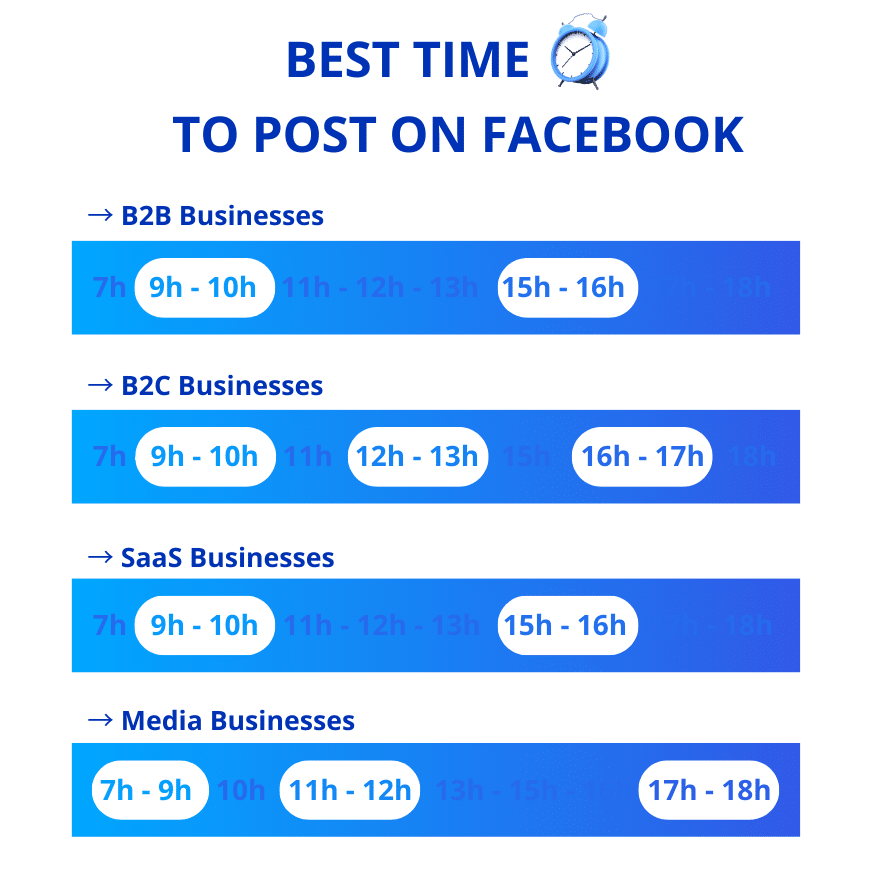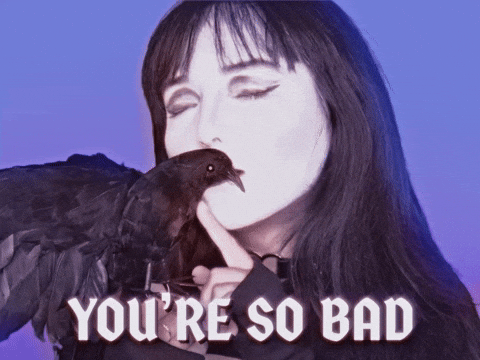Knowing what makes a good marketing Facebook strategy is different from simply having one. 🧐 You need to be aware of the average Facebook engagement rate in order to gauge how well your brand’s content is performing. ⚖️ This enables you to adjust your approach and helps you know if you’re hitting the mark!
Facebook Engagement Rate
The strongest indicator of whether your audience cares or not about what you post on social media and what they want to see more of is the Engagement Rate! 🧨
💡 Therefore, engagement can be used as evidence of how well your social media strategy is working. 📈 High interaction also makes you more visible on social networks and gives the impression of reliability to new profile visitors.
Engagement Rate Definition:
Overall, the engagement rate is a metric used to measure the level of engagement that a piece of content or a social media account receives from its audience. 📣 It is calculated by dividing the number of likes, comments, shares, and other interactions by the total number of followers or views, and multiplying the result by 100 to get a percentage.
👉 A high engagement rate is an indication that the content is resonating well with the target audience, leading to increased visibility, brand awareness, and ultimately, more conversions. 😉
Before calculating the engagement rate, let’s review some basic terms: ⏬
- Reach: How many users have seen your post in their feed?
- Clicks: The number of people who have clicked on a link or image in your post.
- Shares: The number of times readers has shared your article on their own page.
- Comments: The total number of comments left on your posts.
- Likes: The total amount of “likes” on your post.
Facebook Engagement Rate Calculator
By dividing the total number of likes, comments, views, and shares by the number of fans or followers who have seen your posts, you can get your Facebook engagement rate! ⚡
For example, if 10,000 of your followers viewed your post, and you get 500 likes and 500 comments. Then, your engagement percentage would be 10%. 👇
Here’s a simple formula of Engagement rates by Reach (ERR), which you can use! 🧮
Engagement Rate by Reach (ERR):
Total Reach / Total Audience = Engagement Rate x 100.
➕ : Since not all of your followers will view all of your content, reach may be a more realistic statistic than a follower count. Additionally, non-followers might have seen your posts through hashtags, shares, and other channels.
➖ : Reach is a separate variable to manage because it fluctuates for a variety of reasons. 🤷 Keep in mind that a disproportionately high engagement rate can result from a relatively low reach, and vice versa.
Furthermore, to establish whether your engagement rate is good or bad, you must compare it to something else. 🪞 By reflecting on how your material performs over time, you can benchmark your own engagement rate. 💪 By contrasting your performance with competitors, you can try benchmarking your performance against your main competitors.

(Source: SproutSocial).
By setting a standard for social media engagement performance of your sector, you may compare yourself to leading competitors in the market. 💥 By contrasting your performance across several social media platforms, you may also measure against your own social media profiles.
🛎️ This usually involves long hours of reporting… However, you can calculate your engagement rate with the help of several online rate calculator tools.
Facebook Engagement Rate Formulas
Engagement Rate by Posts (ER Post):
Technically, this method counts the number of times followers have interacted with a certain post. In other words, it’s comparable to ERR, but it informs you the pace at which followers interact with your content rather than the reach. 🤗 This is how the majority of social media influencers determine their typical engagement rate:
➕ : This method replaces reach with followers, which is typically a more reliable statistic. ERR is a better approach to measure interactions based on how many people have read your post. For a more precise assessment of post-by-post engagement, consider this method if your reach varies frequently.
➖ : As previously said, while this may be a more reliable way to track engagements on posts, it may not always give the complete picture because it ignores viral reach. 🦠 Additionally, as your following grows, your rate of engagement may slightly decline.
Engagement Rate by Impressions (ER Impressions):
- ER impressions = Total engagements on a post divided by the total impressions multiplied by 100.
- Average ER impressions = Total ER impressions / Total posts.
➕ : If you’re running paid Facebook content and need to gauge effectiveness based on impressions, this method can be helpful. 🤑
➖ : An equation for engagement rate that is based on impressions is inevitably going to be less accurate than ERR and ER post equations. Similar to reach, impression statistics might vary. It could be a good idea to combine this technique with reach.
Daily Engagement Rate (Daily ER):
- Daily ER = Total daily engagements / Total followers *100
- Average Daily ER = Total Engagements for X Days / (X Days * Followers) * 100.
➕ : Instead of focusing on how your followers interact with a particular article, this method is a smart way to determine how frequently they visit your account each day. 🥰 As a result, it factors in engagements on both new and old postings. For particular usage circumstances, this formula can also be customized. For instance, you can modify “total engagements” to reflect the fact that your company only wishes to track daily comments.
➖ : This method has a lot of room for error. 🙊 For instance, the method doesn’t take into consideration the possibility of a follower participating 10 times per day, as opposed to 10 followers engaging just once. The quantity of posts you share is one factor that can affect how many people engage with you each day. Because of this, it could be interesting to plot daily engagement against the quantity of posts.
Engagement Rate by Views (ER View):
- ER views= Total engagements on video post / Total video views *100
- Average ER view = Total ER views / Total Posts.
➕ : This might be a fantastic approach to gauge engagement on your video’s goals.
➖ : Non-unique views, or repeat views from a single person, frequently appear in view tallies. Even while they may have watched the video more than once, they might not have actively participated each time. 😑
Cost per Engagement (CPE):
🔔 Typically, this calculation is intended to measure social media influencer engagement, which is used by the majority of social media ad platforms along with other goal-oriented calculations like cost-per-click. 🖱️ To ensure that your comparisons are fair, double-check the interactions that qualify as real engagements!
Engagement Rate Metrics:
Finally, you can decide to incorporate all or some of these metrics when figuring out your social media engagement rates, depending on the social networks you use: ⏬
- Facebook: 📖 Reactions, clicks, comments, shares, and private messages.
- Instagram: 📲 Profile visits, story sticker taps, “Get directions” button clicks, brand hashtag usage, likes, comments, shares, saves, and direct messages.
- LinkedIn: 🔗 Likes, comments, reposts, private message shares, and customized button clicks.
- Twitter: 🕊️ Retweets, mentions, comments, and the use of branded hashtags.
- Pinterest: 📌 Likes, comments, and pins.
- TikTok: 🎵 Likes, comments, saves, and shares.
- YouTube: ▶️ Likes, comments, shares, downloads, and saves.
Best Practices for Facebook Engagement Rate
Here are some best practices in order to have a good engagement rate. For example, you could make Facebook contests, ask questions, use photo posts, and call to action are essential! 🔥
Also, you should frequently, if not daily, monitor the rate of interaction because it varies quite a bit. 😬
Always keep in mind that engagement depends on good timing. ⌛ When everyone is asleep or at work, you should avoid posting on social media. When people are traveling or just getting home from work, it would be better to post. ✅ People frequently check their phones at these times to have quick updates.

1. Focus on organic reach for your content:
First, make sure your posts are directed at the appropriate audience unless you have a limitless budget. 💰 Similar best practices apply to social media posts on sites like TikTok and LinkedIn.
2. Post as often as possible:
Regular publishing is crucial if you want people to interact with your Facebook posts; try to do it at least once every day (daily posting has been proved to boost interaction). 🚀 To encourage readers to read and share your posts with their friends, make sure each one is interesting and relevant. 🤓
3. Prioritize video content:
One of the most engaging types of content on Facebook is video, 📹 and posts with video get more interaction than posts without. Additionally, Facebook video viewing time tends to be higher than photo or text post viewing time. Videos are thus the best way to engage your audience with your business page and increase interest in your goods or services. 🏹
Understanding the Facebook Algorithm
The Facebook algorithm is a complex set of rules and calculations that prioritize which posts appear on an individual’s Facebook feed. 🧾 It uses a variety of criteria to determine the relevance and importance of each post, including its level of engagement, the user’s past behavior and interests, and the time and date of the post. ✍️
(Learn how to schedule a post here!)
This algorithm analyzes user interactions with content and likes, comments, and shares to predict what users might be interested in viewing next. 👀 It also takes into account the type of content, such as photos, videos, text, or links, and how recently it was posted. 💫
(Discover how the LinkedIn algorithm works, too!)
The Facebook algorithm also considers the importance of the post’s source. 🔍 For example, posts from family and friends tend to carry more weight than posts from businesses or organizations. This is known as the “engage, don’t broadcast” rule, which encourages businesses to engage with their customers rather than simply broadcasting their message.
🎯 In general, the Facebook algorithm aims to provide users with the most relevant and engaging content, while also giving businesses and creators the opportunity to reach their target market.
Conclusion: How to calculate the Engagement Rate on Facebook?
The most used formula for calculating engagement is engagement rate by reach (ERR) – the first one we saw in this article! 👆 It gauges the percentage of viewers who decided to engage with your content after viewing it. 👉 Divide your total engagements per post by your reach per post, multiply the result by 100, and that is your engagement rate by reach.
To sum up, it is now essential for businesses to implement a Facebook engagement plan. 🛣️ Building a strong community, increasing the lead generation, and improving conversion rates all depend on your Facebook engagement rate, or the likelihood that people will like or comment on your posts.
💡 On the other hand, take time to respond to your audience’s comments, or use a Facebook auto-reply app!
FAQ of Facebook Engagement Rate
What is a good engagement rate on Facebook?
Generally speaking, a good engagement rate on Facebook varies depending on the industry and the number of followers. 🗣️
According to Hootsuite, a good engagement rate for businesses with fewer than 10,000 followers is 4.5% – 8%. For businesses with more than 10,000 followers, a good engagement rate is around 2% – 5%. 🔔
👉 Factors that can affect engagement rates include the quality and relevance of the content, the timing and frequency of posts, and the use of hashtags and captions. Furthermore, as the number of interactions and engagements generated by various Facebook post categories varies, the average Facebook engagement rate is broken down by post types.
What is a bad Facebook engagement rate?
Conversely, any Facebook engagement rate that is below the average percentage for your sector would be considered bad. 🙈 Fortunately, there are plenty of benchmarks based on social media statistics, from different industries, that may guide you in determining whether you should be having better engagement.

How to get more engagement on a Facebook post?
Here are some tips for increasing engagement of Facebook post: 👇
-
Use eye-catching visuals or videos: 👁️ Visuals drive engagement, and videos have been found to be the most engaging form of content on Facebook.
-
Ask questions: 🤔 Asking questions encourages people to engage with your post and share their thoughts and ideas.
-
Use emojis: 😋 Emojis help to convey emotions and make your posts more conversational, which can lead to increased engagement.
-
Be consistent: 🪶 Consistently posting valuable and relevant content increases the chances of your post being seen and engaged with by your audience.
-
Use humor: 😂 Humor is a great way to engage with your audience and increase the likelihood of your post being shared.
-
Host giveaways: 🎁 Giveaways are a great way to incentivize engagement and encourage people to share your post with their friends.
When to post on Facebook to get more engagement?
According to various studies, the best times to post on Facebook are
- Weekdays: 🗓️ Posts on weekdays tend to receive more engagement than on weekends.
- Midweek and midday: ⌚ Posting on Wednesdays and Thursdays between 11 a.m. and 2 p.m. has been found to be the most effective.
- Avoid early mornings and late nights: 😴 Posting before 8 a.m. and after 8 p.m. generally results in fewer engagements.
However, the best time to post ultimately depends on your target audience and the content you are sharing. 🧲 Experiment with different posting times and track your Facebook engagement rate, to determine the best marketing mix for your business.












